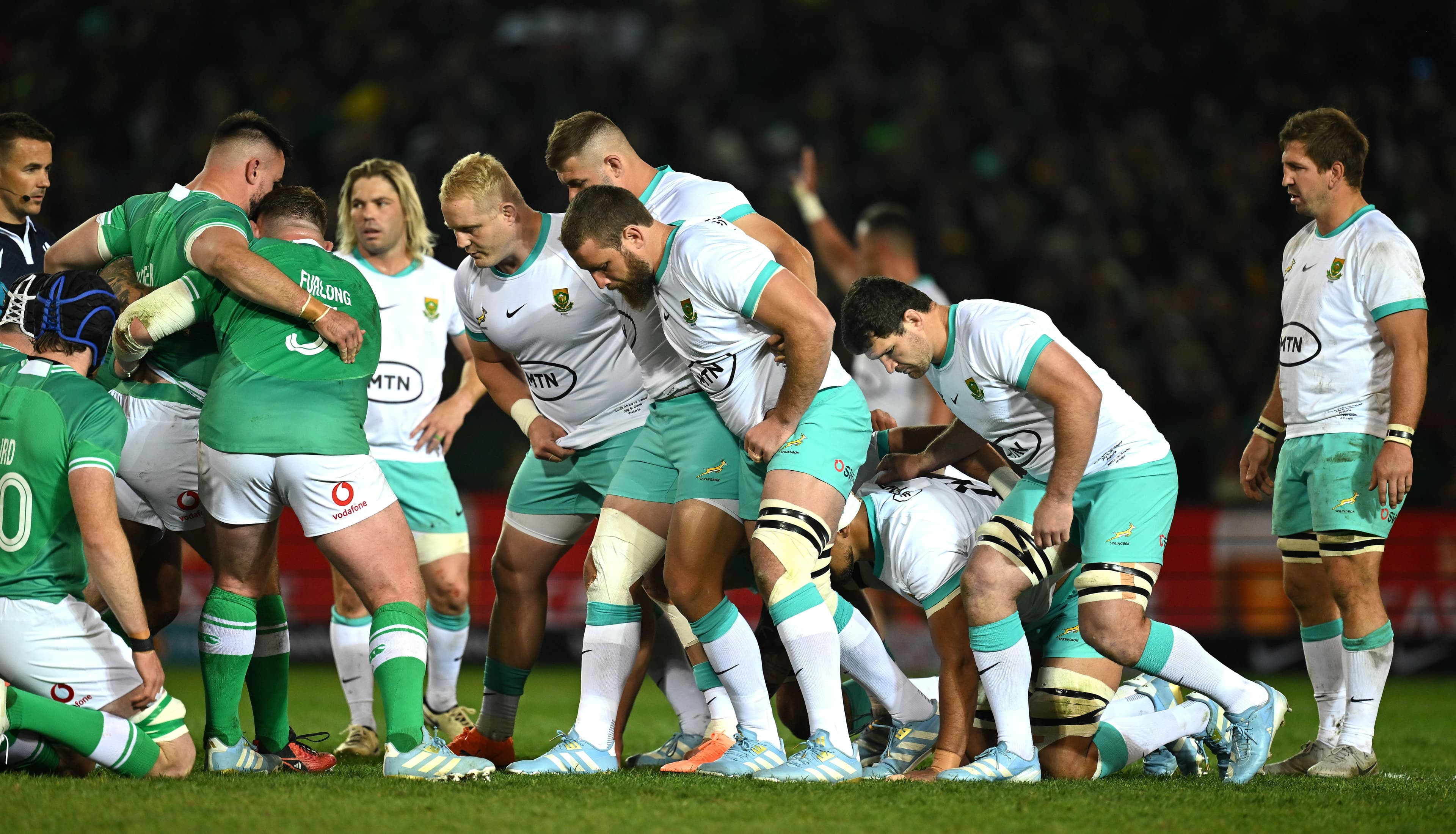Rugby
What are the Positions in Rugby?
Rugby Union has fifteen players on a team: ten different forwards and backline players. There are subsets positions in both departments. These are the positions in rugby.

New Zealand players perform the Haka//Getty Images
Rugby union is a complicated and unique sport. Players can pass the ball (backwards), kick, and tackle the opposition players using their arms but not their feet. This is one of the many differences between rugby football and association football and a reason for the formation of rugby union in 1863.
There are fifteen players on a starting lineup in rugby union. There are two types of positional elements: the forwards and backs. Ten different positions are made up of forwards and backline players. SportsBoom gives a comprehensive run-down of the positions on a rugby team.

England v Australia - QBE International//Getty Images
What are the Names of the Positions on a Rugby Team?
The subset of positions in rugby is almost half. There are eight forwards and seven backline players in a team. The eight forwards are broken into subsets of their own: the front row, the second row, and the back row, made up of three loose forwards. The backline has several subsets. There are two halfbacks, centres (inside and outside), wingers (left and right), and a lone fullback.
Rugby Positions: Forwards
The front-row forwards are made up of two props - a tighthead and a loosehead prop - on either side of a hooker. In the second row, a tighthead and a loosehead lock forward. Three players make up the back row or loose trio: the two flanks and an eighth man, or number eight (No. 8). The flanks are specialised like props and locks. There is an openside and a blindside flank. The No. 8 is the link to the backs via the scrumhalf.

Santiago Carreras kicks the ball//Getty Images
Rugby Positions: Backs
The backline has seven players, all with a unique role within the team set-up. The scrumhalf and flyhalf make up the two halfbacks. The scrumhalf is the link to the forwards via the No. 8. The midfield has an inside and outside centre. Two wings stand next to the outside centre, but depending on which side of the field the attack takes place, it could be either the left or right wing. These three players are known as the outside backs. The fullback is a lone ranger, covering the ground behind the backline.
Overview of Positions in Rugby Union
| Forwards / Backs | Rugby Union Positions: Names & Shirt Numbers |
| Front Row Forwards | Loosehead Prop (1) Hooker (2) Tighthead prop (3) |
| Second Row | Locks / Second Row (4 & 5) |
| Loose Forwards / Back Row | *Blindside Flanker (6), *Openside flanker (7) No. 8/Eighth Man/Number Eight/ (8) |
| Half-backs | Half-back / Scrum-half (9) |
| First Five-eighth / Fly-half (10) | |
| Midfield / Centres | Inside Centre / Second Five-eighth (12) Outside Centre (13) |
| Wings | Left Wing (11) / Right Wing (14) |
| Fullback | Fullback (15) |
Roles of the Forwards
The scrum is the cornerstone of rugby union. The three front-row players have specialised skill sets. The tighthead prop can play loosehead; however, most loosehead props cannot scrum down as a tighthead due to the dangerous nature of the tighthead position in the scrum. The tighthead name gives away the meaning of the position as this player’s head is in between the opposition loosehead and hooker’s heads during the scrum.
The hooker throws the ball into the lineout, one of the most important set pieces. The hooker, placed between the props, must contest the put-in to the scrum by ‘hooking’ the ball back to his team. Should the hooker lose possession on his put-in, the opposition claim a ‘tighthead’ and win possession for themselves. In modern-day rugby, ‘tightheads’ are rare due to the nature of the sideways put-in of the scrumhalf.

South Africa v Ireland - Summer Tour//Getty Images
The two locks are skilled in collecting kick-offs, restarts, and the 22 drop-outs. Their primary role is to solidify the scrum behind the props. This is the tight five. The position is physical, and the second row is called "the boiler room” in the northern hemisphere. Locks are tall and must be experts at catching and lifting in the lineouts, and strong to clean out the rucks.
Although similar, the blindside and openside flanks are specialised. One attacks the rucks to slow the opposition while trying to win turn-over possession. In the southern hemisphere, the openside flanker is also known as a “fetcher” because they contest the rucks to win turnovers. The openside is an expert defender but versatile as they often stand among the backline during attacks. The blindside flanker must be excellent at defending, carrying, and cleaning out the rucks. Both flanks must be skilled within the lineout as ‘lifters’ and ‘jumpers.
Often, the result in rugby is decided by the team with the better forwards. Which ever side has the dominant pack, usually wins. Powerful packs gain the ascendency through set piece and gain-line domination. Tries are set up through scrums, lineouts, and driving mauls, which can lead to penalty tries if stopped illegally.

New Zealand's wing//Getty Images
Roles of the Backline
Except for the two wings, every position in the backline has a unique role to fill within the confines of the game. Some players are skilled and talented enough to play several positions in the backline. This role is known as a utility back. These players often flit between the outside backs, fullback, and flyhalf.
These utility players must be good at kicking from the tee and out-of-hand because the primary role of playing flyhalf and fullback is to be able to kick well. All kickers need to be accurate from the tee, because conversions and penalties often decide games more than tries.
The two halfbacks are skilled at passing, kicking, and delegating. The scrumhalf and flyhalf need excellent communication skills to link the forwards and backs. The inside centre is the big ball carrier and strong defender. The outside centre must possess both qualities and be an excellent kicker and passer. The wings are the so-called “finishers.”
The wingers are the try scorers and are often at the top of the rugby try-scoring lists. They must be excellent in the air because the opposition kicks many high balls on the wings during matches. The fullbacks must possess the same catching ability. Most importantly, fullbacks must be excellent kickers and defenders.

RUGBYU-6NATIONS-WAL-FRA//Getty Images

Kaylan Geekie is a sports fanatic. He attended Durban High School before moving to Scotland, where he lived for 15 years. During his time in the United Kingdom, Kaylan graduated with a first-class BA Honours Degree in Sports Journalism at the University of the West of Scotland. Kaylan worked for nine years as the Match-Day Editor of SuperXV.com, reporting on Super Rugby, The Rugby Championship, the 2015 Men's Rugby World Cup and the 2017 British & Irish Lions series for the website.